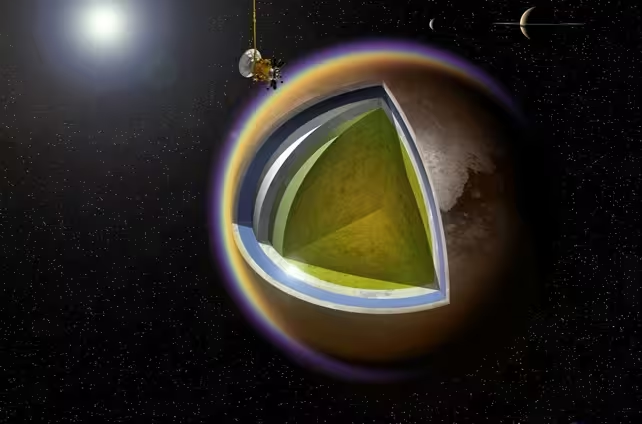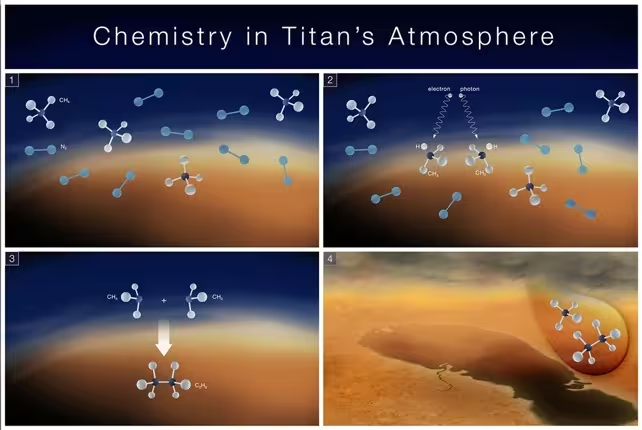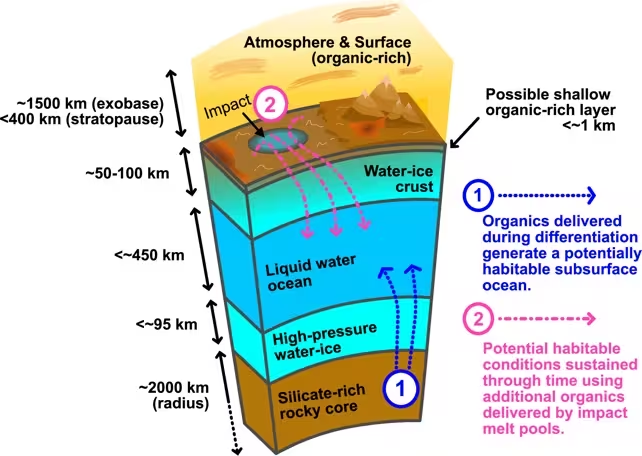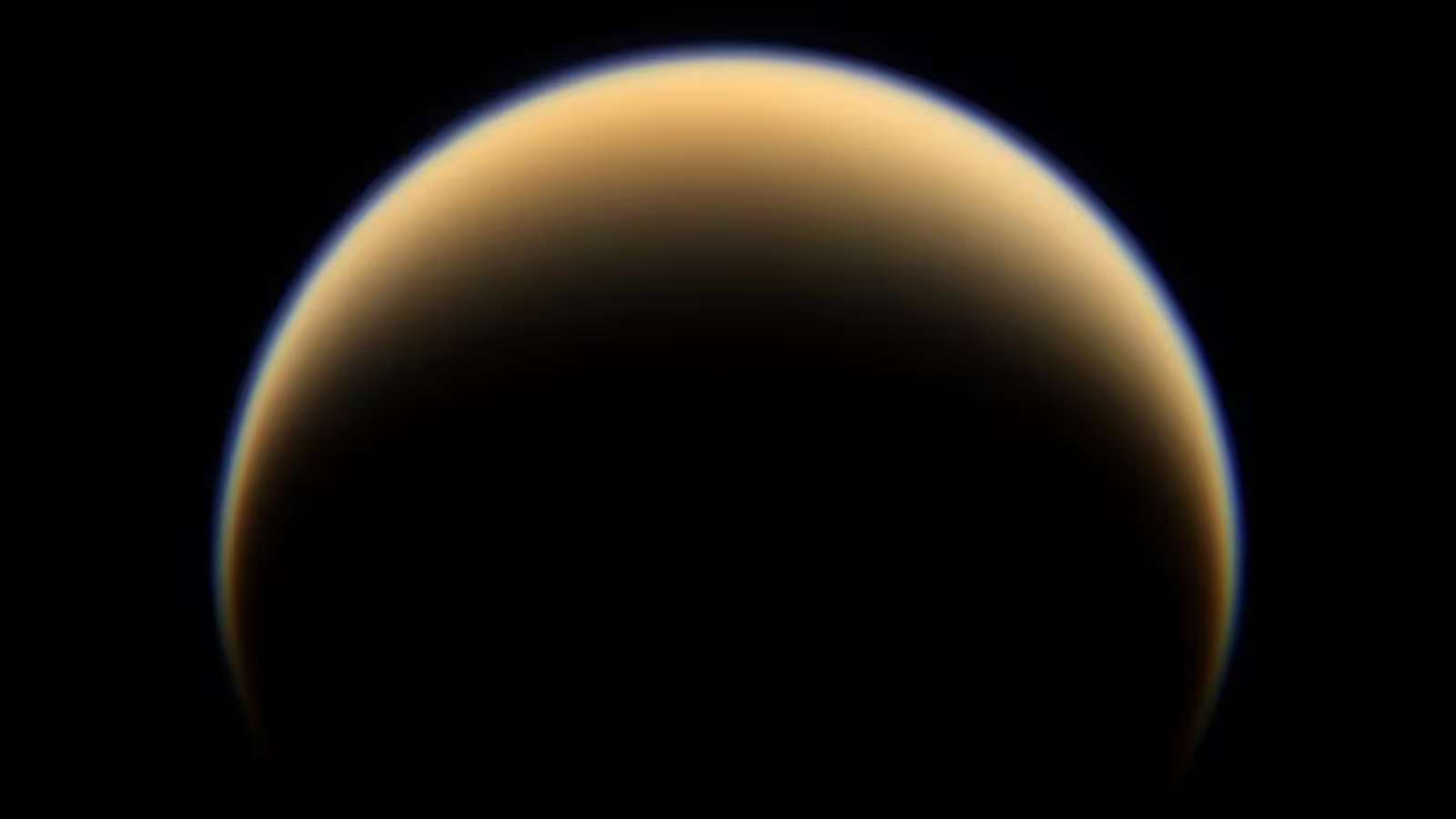5 Minutes
Titan: Saturn’s Largest Moon and a Prime Target for Astrobiology
Saturn’s largest moon, Titan, has long fascinated scientists as a prime candidate in the search for extraterrestrial life. Unlike most other bodies in the Solar System, Titan boasts a wealth of organic compounds and a unique combination of surface and subsurface environments. Recent studies now suggest the possibility of a subterranean ocean teeming with native life forms—but, intriguingly, the entire biosphere may collectively weigh no more than a miniature poodle.
Geological and Chemical Complexity of Titan
Titan sets itself apart in astrobiology due to its remarkable surface chemistry and layered internal structure. The moon is sheathed in a thick haze rich in hydrocarbons, including methane and ethane, which exist in liquid form on its ultra-cold surface at -179°C (-290°F). Liquid methane rivers and lakes, some as vast as Earth's Great Lakes, define its geography. Below Titan's ice-clad shell, data from the Cassini-Huygens mission indicate the presence of a global water ocean, buried deep beneath roughly 100 kilometers of solid water-ice. This extensive layering—from a rocky core to high-pressure "ice-VI" and finally the subsurface ocean—creates conditions distinct from any other moon in the Solar System.
Organic molecules continually accumulate on Titan. In its upper atmosphere, ultraviolet radiation breaks apart nitrogen and methane, recombining them into complex organic compounds heavier than those found on Earth. These particles gently rain down, building up dark, dune-like deposits and potentially seeping through cracks in the ice to enrich the underground sea with chemical nutrients. Meteorite impacts, as well as upwelling from the core, could further drive the flow of organics into this hidden ocean.

Evaluating the Potential for Life: Bioenergetic Modeling
Microbial Survival in Titan’s Harsh Environment
A new study led by Dr. Antonin Affholder, an evolutionary biologist at the University of Arizona, employed sophisticated bioenergetic models to estimate the potential biomass that Titan’s subsurface ocean could support. The team focused on the possible metabolism of glycine, an amino acid common throughout the universe and abundant in asteroids, comets, and interstellar clouds. Unlike Earth’s diverse biosphere, which thrives on oxygen-driven respiration, Titan’s hypothetical microorganisms would need to rely on fermentation—anaerobic digestion of available organics—for survival.
This choice of modeling is grounded in Earth’s own history: fermentation, as an ancient, widespread metabolic strategy, requires minimal speculation into unfamiliar alien biochemistry. It sustains bacteria such as Clostridia here on our planet, and enables familiar processes like breadmaking and yogurt fermentation. The prevalence of glycine and its precursors further strengthens the plausibility of this model for extraterrestrial life.

Limited Nutritional Opportunities—With Tiny Consequences
Despite a continuous influx of organic material, the new research shows that energy and nutrient cycles in Titan’s ocean remain severely constrained. Affholder and colleagues found that the organic matter available is, for the most part, too sparse or chemically inaccessible to support robust microbial populations. Their calculations suggest a minuscule density of less than one fermenting cell per kilogram of ocean water on average. In total mass, all these theoretical organisms combined might weigh only a few kilograms—no more than a small dog.
Implications for Astrobiology and Future Missions
The notion that Titan’s biosphere could be so diminutive has significant implications for future space exploration. Any search for alien life on Titan will face extraordinary challenges in detection, akin to discovering a single microbe in hundreds of millions of cubic kilometers of water. Even if life exists, its minimal presence, perhaps equivalent in carbon content to one human adult, would demand extremely sensitive instruments and careful sampling strategies.
Nonetheless, the discovery would be monumental. Confirmation of even a spare, fermentation-based biosphere using only the available organics would offer powerful insights into life’s adaptability and the potential universality of certain metabolic pathways beyond Earth.

Conclusion
Titan continues to intrigue astrobiologists as one of the most promising worlds for hosting extraterrestrial life within our Solar System. While the prospect of discovering a sprawling, complex biosphere is now diminished, the likelihood of finding a “pint-sized” ecosystem thriving in its deep, subsurface ocean cannot be discounted. These findings sharpen the focus of upcoming missions and technological efforts, underscoring both the wonders of planetary science and the resilience of life—even when that life could, quite literally, fit in the palm of your hand.



Comments